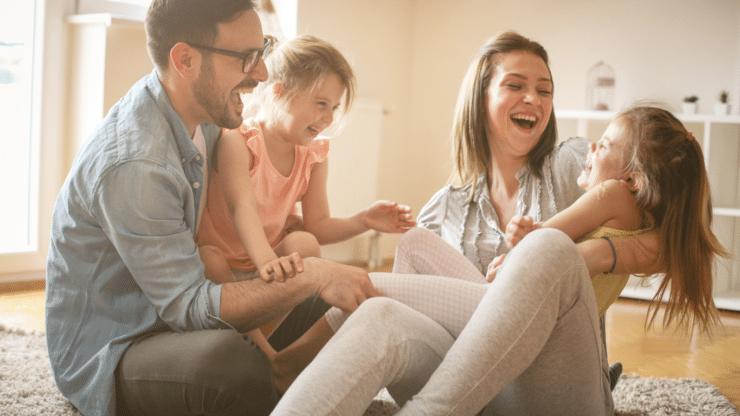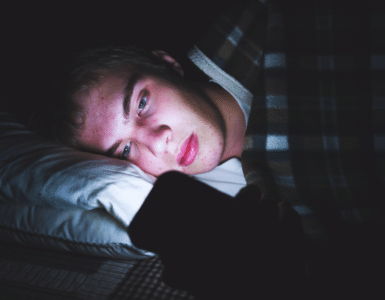If you’ve seen any minimalist Instagram accounts, you’ll quickly notice that 99% of “social media minimalists” are either single or living with a partner but don’t have children. As someone who has two cats and zero kids, it’s very easy for me to be a minimalist.
I suppose as a cat parent there are still challenges. My cats’ toys and scratchers create a bit more clutter than I’d like, but they’re necessary since I don’t want my furniture to become scratching posts. At least if I want to declutter the cat toys, my cats won’t complain.
So, if most of the online minimalists flaunting their perfectly monochromatic and clutter-free lifestyle are also child-free, does that mean you can’t be a minimalist and have kids? Not at all!
If you want to embrace minimalism with your kids, there are some challenges, but you can totally do it. Here are some tips to help!
1) Set your intentions.
Before you even begin throwing stuff away, think about why you and your family are embracing minimalism. Is it because you are tired of your home getting messy so quickly? Are you surrounded by too many things you don’t need? Is the clutter making you feel stressed? Did you see a minimalist video that inspired you?
@threetimesahome Fridah plans be like 💁🏻♀️ #hallwayy #hallwaydecor #hallwayart #diyframes #homedecor #diningroomview #diningroom #neutralhome #fyp #ItsGreatOutdoors #diningroomdecor #decor #affordabledecor #modernhome #organicmodern @IKEA #ikeahack
Whatever the reason is, make sure that you’re clear about why you’re doing it and that you’re doing it for the right reasons. Getting rid of clutter is very freeing and helps you feel calmer and more focused, but people who become minimalists to reduce clutter are missing out on the mental, emotional, and mindfulness aspects of minimalism.
It’s not about the stuff, it’s about the relationship you have with that stuff and how that stuff makes you feel. If you’re aware that the things you have around you are affecting your mood and thought process, you are more likely to be very careful about what you have around you. When you go shopping, you will think about whether or not you really need that electric wine bottle opener.
Set your intentions. Make sure you focus on your mindset and not just the material objects in your home.
2) Talk to your kids.
Encouraging your family to adopt a minimalist lifestyle starts with communicating with your family. Tell them about why you want to become a minimalist, list the different benefits, and show them some before and after decluttering videos to drive the point home.
This should be a two-way conversation, don’t just tell your kids you’re going to get rid of a bunch of their stuff whether they like it or not, explain that you want to start getting rid of things you no longer need and reduce the amount of stuff you have and tell them the reasons why. Ask your kids what they think about minimalism and make sure this is a two-way conversation. Make sure they understand what’s happening.
3) Start with your stuff first.
Once you’re ready to start getting rid of the stuff you no longer want or need, you might be tempted to start with your kid’s room first. A lot of stuff can accumulate in a typical child’s bedroom, but unless your child is still an infant and won’t notice that 50% of their toys and trinkets are gone, you can end up upsetting your child unnecessarily but forcing them to declutter out of nowhere.
Instead, lead by example. Kids learn by copying the people around them. By decluttering your belongings first and designating some boxes for items that you will donate to charity or give to people in need, your child will see the benefits of decluttering and can see that it can help other people too. Typically, they will start decluttering on their own if you lead by example.
If they don’t want to get rid of their stuff, don’t force them. To encourage them to get rid of some things, you can have them make two piles, one for things they really need and one for things they don’t play with.
Instead of getting rid of the second box right away, you can tell your child that you will keep that box in the closet for a week and if they find they miss something from that box, they can take it back, but if they don’t miss any of it, they can donate to kids who need toys.
Make sure your child has autonomy over their stuff. This is as much their journey as it is yours. Younger kids can really get attached to things and don’t like sudden change, so it might take more time for them to declutter their room and that’s fine.
Give them time and make sure they’re ok with getting rid of their things because if you force them, you’re not teaching them minimalism, you’re just teaching them that someone bigger and stronger than them can take their stuff away for no apparent reason.
4) Make sure that your approach to minimalism is both fun for you and the rest of your family.
Decluttering should feel relaxing and fun for you and your family. If it’s not, then you’re not approaching it with the right mindset. If reducing the amount of stuff in your home is causing you stress and feels like a chore for everyone involved, it won’t last.
You can make minimalism fun by making a game out of it for your kids. See who can donate the most stuff to charity or who can declutter the fastest.
You can read books to your kids about simple living and being a giving person and valuing friendships and experiences rather than stuff. The Giving Tree and The Gift of Nothing are great books that teach minimalist values.
5) Don’t worry about aesthetics; do what feels right.
Your entire home doesn’t need to be white or sad baby beige for you to be a “real” minimalist. You can have colors in your home and wardrobe! Your kids can and should play with toys!
When it comes to minimalism, especially when you have kids, forget the staged pictures and videos of grey and white rooms that are mostly empty with three pieces of black clothing hanging from an expensive, stainless steel garment rack imported from Sweden. It’s not realistic to live that way.
Social media has helped more people learn about minimalism but it has also set unrealistic (and many times uncomfortable) expectations of what minimalism is and what it looks like.
ALSO: Normalize Clutter and Reject Instagram’s Fantasy World
You want your home to look nice, but unless you lock your kids in the storage shed, your home will not look like a perfect Pinterest photo 99% of the time, and that’s ok.
This is not about perfection or taking pics for Instagram. This is about you and your family changing your relationship with material objects so that you are mindful about the things you have and why you have them. It’s about feeling happier, calmer, and more present in a clean and organized space.
Remember, it’s not about the stuff, or the lack thereof, it’s about your mindset and your awareness of yourself in relation to the things around you.










Add comment